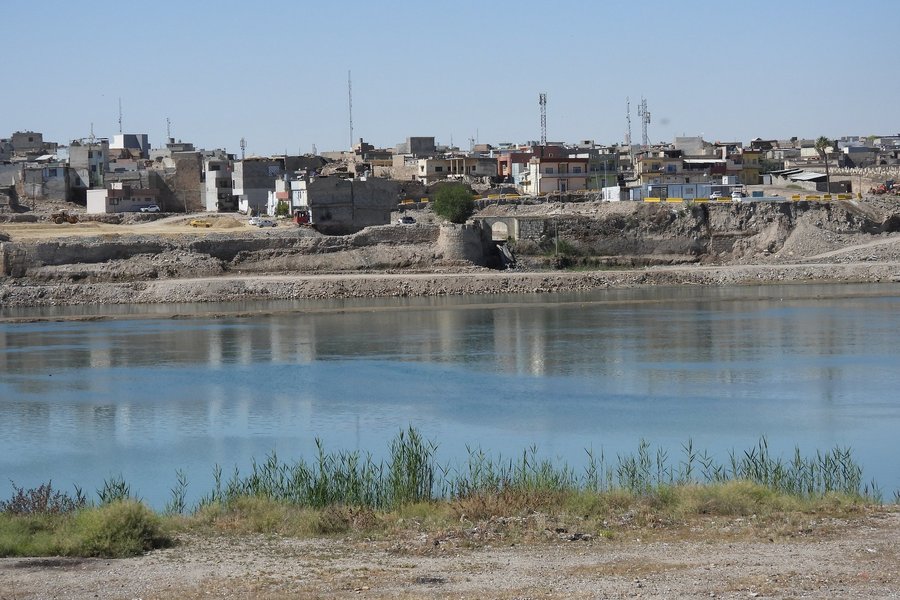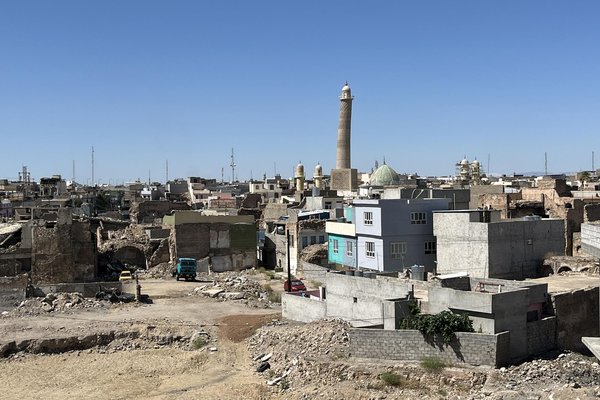Iraq
Old City of Mosul
The Old City of Mosul, which developed on the opposite side of the Tigris River from ancient Nineveh, had its heydays during the Zangid Dynasty of the 12th and 13th centuries.
The Great (Nuriddin) Mosque from 1172, with its marble fountain, was one of its main monuments until it was destroyed in 2017. The city’s buildings were known for their decorative carvings, in a mix of Egypt's Fatimid and local Christian Nestorian architectural traditions. The city has preserved its Ottoman urban layout with narrow alleyways and markets.
Site Info
Official Information
- Full Name
- Old City of Mosul (ID: 6355)
- Country
- Iraq
- Status
-
On tentative list 2018
Site history
History of Old City of Mosul
- 2018: Added to Tentative List
- Added to tentative list
- Type
- Cultural
- Criteria
Links
- UNESCO
- whc.unesco.org
All Links
UNESCO.org
- whc.unesco.org — whc.unesco.org
News Article
- Dec. 14, 2025 theartnewspaper.com — Mosul’s heritage has seen a year of revival—will it be enough to bring back religious diversity?
- Sept. 2, 2025 abcnews.go.com — Iraq reopens historic mosque in Mosul 8 years after Islamic State destruction
Community Information
- Community Category
- Urban landscape: Arabic and Middle Eastern
Travel Information
Recent Connections
News
- theartnewspaper.com 12/14/2025
- Mosul’s heritage has seen a year o…
- abcnews.go.com 09/02/2025
- Iraq reopens historic mosque in Mo…
Community Reviews
Show full reviews
The northern city of Mosul is the odd one out among the Iraqi (T)WHS. On the one hand, it is probably the one most severely damaged during the recent conflicts (though nearby Nimrud has been hit hard as well). On the other hand, it is the only one that has been subject to a full-scale international rescue mission, which has also brought in internationally accepted restoration and conservation standards.
The Old City of Mosul stands for a thus far unrepresented part of Iraqi history: that of the Turkic-Mongol invasions (though a nomination will also include its Ottoman remains). The Turkic Zengid Dynasty ruled the area of northern Iraq and Syria from Mosul from 1127–1222. The city, located along the major trade routes of the time, was known for its metal craftsmanship and miniature painting. The main monument left from this period is/was the Al-Nouri mosque and its leaning minaret.
Unfortunately, it was exactly this mosque that was blown up by ISIS during their retreat from Mosul. Their black flag had been flying from the minaret since Abu Bakr al-Baghdadi claimed the Caliphate from here in 2014. After losing the Battle of Mosul in April 2017, they blew it up with explosives in a “final act of angry defiance”.
The first impression of the Old Town in April 2025 is still one of devastation. The area along the West Bank of the Tigris is in total ruins and part of it has already been bulldozed. The narrow alleyways of the Old …
Keep reading 0 comments
